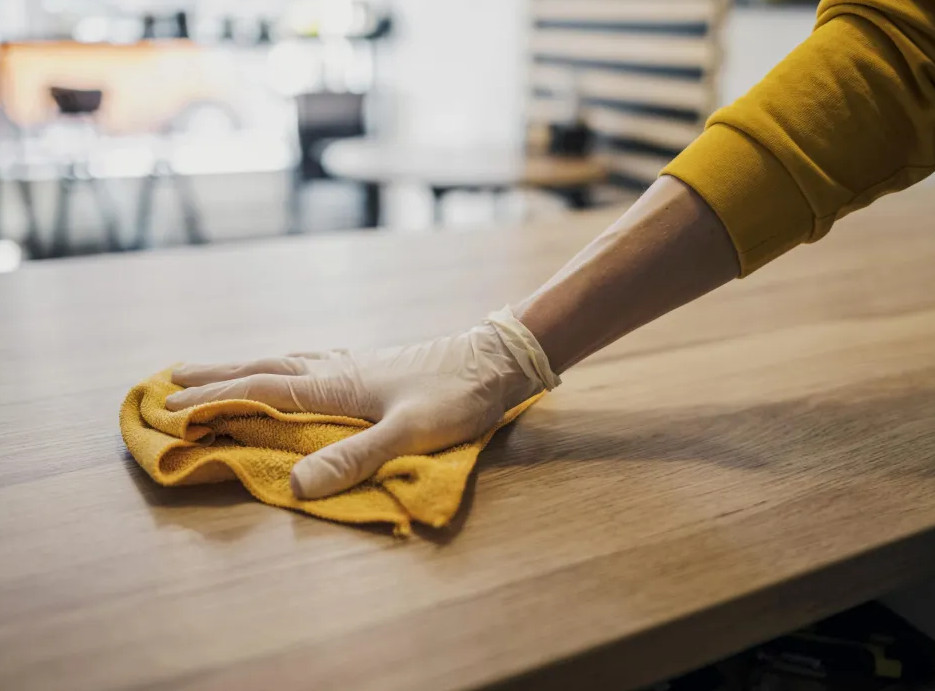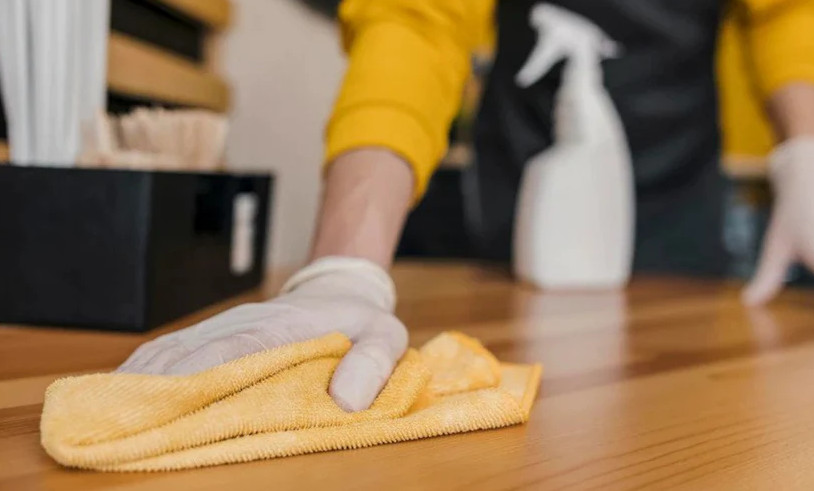Expert Tips for Polishing Wood Furniture
Wood furniture has an old-school quality — it is natural beauty and timeless functionality. But if you want it to remain beautiful and last for a long time, you need to polish wood furniture. Here is a professional essay about Polishing Wood Furniture that combines tips from experience with real-life experiences.
Understanding Wood Furniture Care Tips From A Basic To A High-Tech Approach?
Getting to know the basic wood furniture care is important before we jump into polishing procedures. Wood is a living thing and it is responsive to conditions of the atmosphere such as humidity, temperature and sunlight. They eat away at the wood’s gloss and can wear it down over time.

Expert Tip: Be sure to check what the wood and finish of your furniture is. The different materials (eg oak, mahogany or pine) and finishes (eg lacquer, oil, polyurethane) need different cleaning and polishing techniques. Use product in the wrong way, and it will destroy the finish or the wood.
Layla Armstrong, as the author of this article and a home management expert, says :
My own experience using an all-purpose cleaner to clean an antique oak coffee table, and it actually removed the varnish. The accident taught me to know where the finish is before using any product.
Preparing Your Furniture for Polishing
Preparation is the missing piece. Cleaning the surface with polish or cleaning up grime might leave debris in the surface which is harder to remove afterward and can also scratch.
Dust In Accurately: Wipe surface dust off with a soft microfiber cloth. Avoid feather dusters which can only shove dirt instead of scooping it up.
Clean gently: Depending on any hard to get areas or stubborn grime a mild soap or a wood cleaner works best.
Don’t soak the wood as it will warp and stain if you over wet it.
Expert Tip: Make sure to wash with the grain of the wood. This process stops streaks and gives the wood a natural grain.
My Experiment: I found cleaning in circular motions created messed up swirls on my table. Not only was it easier to clean with the grain but also it made polishing easier.

Choosing the Right Polish
What polish you apply makes all the difference in how much longer your furniture lasts. There are three main categories of polishes:
Wax: Gives it a long-lasting, protective coating and brings out the grain.
Oil: Deep-Dries into the wood and restores natural sheen, works on natural and oiled furniture.
Spray or Liquid Polish: Great for last minute touch-ups, but can have silicone that could leave a residue.
Expert Hint: Apply polish to a small test area and then on the entire piece. This step makes them compatible and won’t cause harm.
My Opinion: I prefer beeswax polish for old furniture. Not only does it nourish the wood, but it provides a deep luster that no amount of man-made polish can duplicate.
You can also read these articles on our website:
Techniques of Polishing to Get The Very Best Results
Polishing wood furniture is an art and science. Then do these steps for best results:
Use a Soft Cloth or Applicator Pad to Rub Polish On Gently. Use polish too often and it will get greasy.
Carefully Buff: After application, scrub the surface with a clean dry cloth in circular strokes, switching to following the grain for streak free finish.
Apply Layers at a Time: To get a thicker sheen, go with layers instead of a single thick coat. Let one layer dry before adding the next.
Tip From an Expert: When carving or carved fine woodwork, use a small brush or cotton swab to get in the crevices.
An EXPERIENCE: I have discovered that an old T-shirt is a great buffing cloth. Soft and scratch-proof, and it’s easy to come by, which is eco-friendly.
Preventive Maintenance for Lasting Shine
Care is a must for keeping your wood furniture looking its best.
Dust Regularly: Avoid dust from gathering on furniture, wipe furniture every week with a dry microfiber cloth.
Be Free from Direct Sunlight: UV light may yellow the wood and dry the finish. Protect your furniture with curtains or UV window film.
Maintain a Controlled Humidity: Maintain humidity indoors between 30-50% so that the wood will not crack or warp.
Tip from the Pros: Keep water rings and heat marks off your surfaces with coasters or placemats. If you do find a smudge, baking soda and water should be enough to wipe it off without ruining the surface.
My Experience: A humidifier has been a life saver in my house during the winter. Not only does it keep the dry air from rotting the wood, it also keeps the furniture fresh and neat.
Natural DIY Polishes
If you’re in need of an eco-friendly and inexpensive alternative, DIY polishes can work just as well as the branded versions.
Olive Oil and Lemon Juice: One part lemon juice and two parts olive oil makes a gentle cleaner and gloss.
Vinegar and Oil: Mix equal parts white vinegar and olive oil for a cleaner that will clean away the dirt and shine.
Beeswax Comb: Apply melted beeswax and combine with coconut oil for an ultra lasting nourishing polish.
Pro Tip: Only use fresh products and never use DIY polishes that are overbuffed as they will gather dust.
Tip: The olive oil and lemon juice recipe is my go-to since years. It’s fast to make, smelt great, and turns my furniture bright with no toxic chemicals.
Common Mistakes to Avoid
Polishing wood furniture can be a simple task, but here are a few errors that will damage your results:
Don’t Polish Dust: Dust embedded into finish with a rough finish is produced when you polish over it.
Overusing: Using too much polish leaves a sticky dust magnet on the polish.
Use of the Incorrect Cloth: Hard cloths can scratch. Never use anything that is tangle-free.
Pro Tip: Don’t use general purpose cleaners on wood furniture. These usually have ammonia or other toxic chemicals that may damage the finish.
Reminder: I had to discover my lesson the hard way that polishing on a dirty surface does not just take away the shine but it is also a pain to clean. A little prep is definitely a good thing!
FAQ:
- What is the best way to polish wood furniture?
The best way to polish wood furniture is to start by cleaning the surface with a soft, damp cloth to remove dust. Apply a small amount of high-quality wood polish or wax using a clean, lint-free cloth, working in the direction of the grain. Buff the surface gently to create a shine, and avoid using excessive polish to prevent buildup. Regular maintenance helps preserve the furniture’s natural beauty. - How do you highly polish wood?
To achieve a high polish on wood, begin by sanding the surface with fine-grit sandpaper to smooth out imperfections. Apply a wood conditioner or primer, followed by multiple thin coats of high-gloss polyurethane or lacquer, sanding lightly between coats. Finally, use a polishing compound and a soft cloth or buffing pad to bring out a mirror-like shine. Proper ventilation and patience are key for the best results. - How do you remove years of grime from wood furniture?
To remove years of grime, start by wiping the surface with a mixture of mild soap and warm water, using a soft cloth or sponge. For stubborn dirt, use a wood cleaner or a solution of vinegar and water, but avoid soaking the wood. Gently scrub with a soft-bristle brush, then dry thoroughly. Finish by applying a wood conditioner or polish to restore moisture and shine. - What are the disadvantages of polishing wood?
Polishing wood can sometimes lead to a buildup of wax or polish, creating a dull or sticky surface over time. Over-polishing may also remove the wood’s natural patina or finish, reducing its value. Some polishes contain chemicals that can damage or discolor the wood if not used correctly. Additionally, excessive polishing can make the surface slippery or attract more dust and dirt.
Article source:

I didn’t know oil-based cleaners weren’t suitable for sealed surfaces. I’ll definitely double-check the type of wood finish next time before buying a cleaner
I’ve always used spray polishes for convenience but didn’t realize they don’t protect as much. I’ll consider trying paste wax for my antique table
DIY cleaners are a game changer! I’ve been mixing vinegar and olive oil for years, and it works wonders for general cleaning. But thanks for the tip about testing in a hidden spot—I learned that the hard way!
“I never thought about the importance of buffing after polishing. It really makes a difference in the shine and prevents streaks. Thanks for the detailed step-by-step instructions
I loved the breakdown of different polish types. I always wondered if combination products were as good as separate cleaners and polishes—seems like they’re more for quick jobs